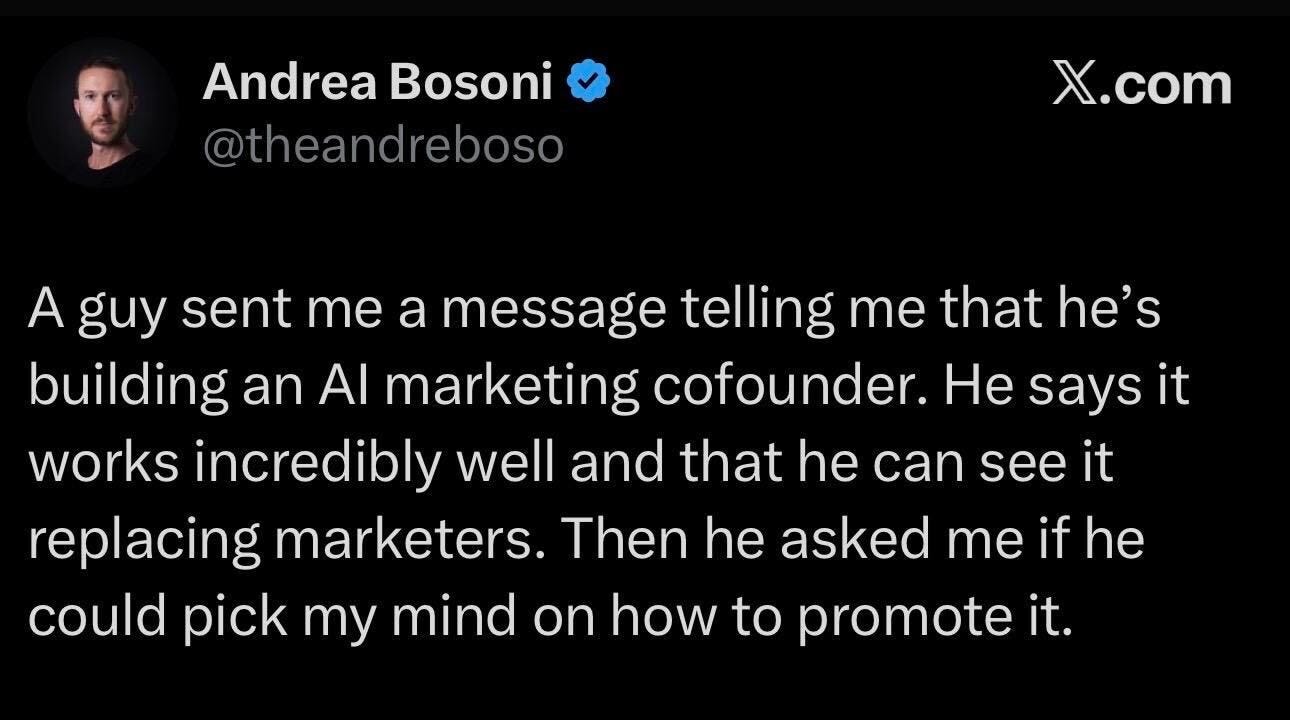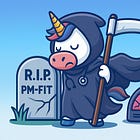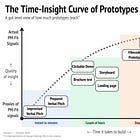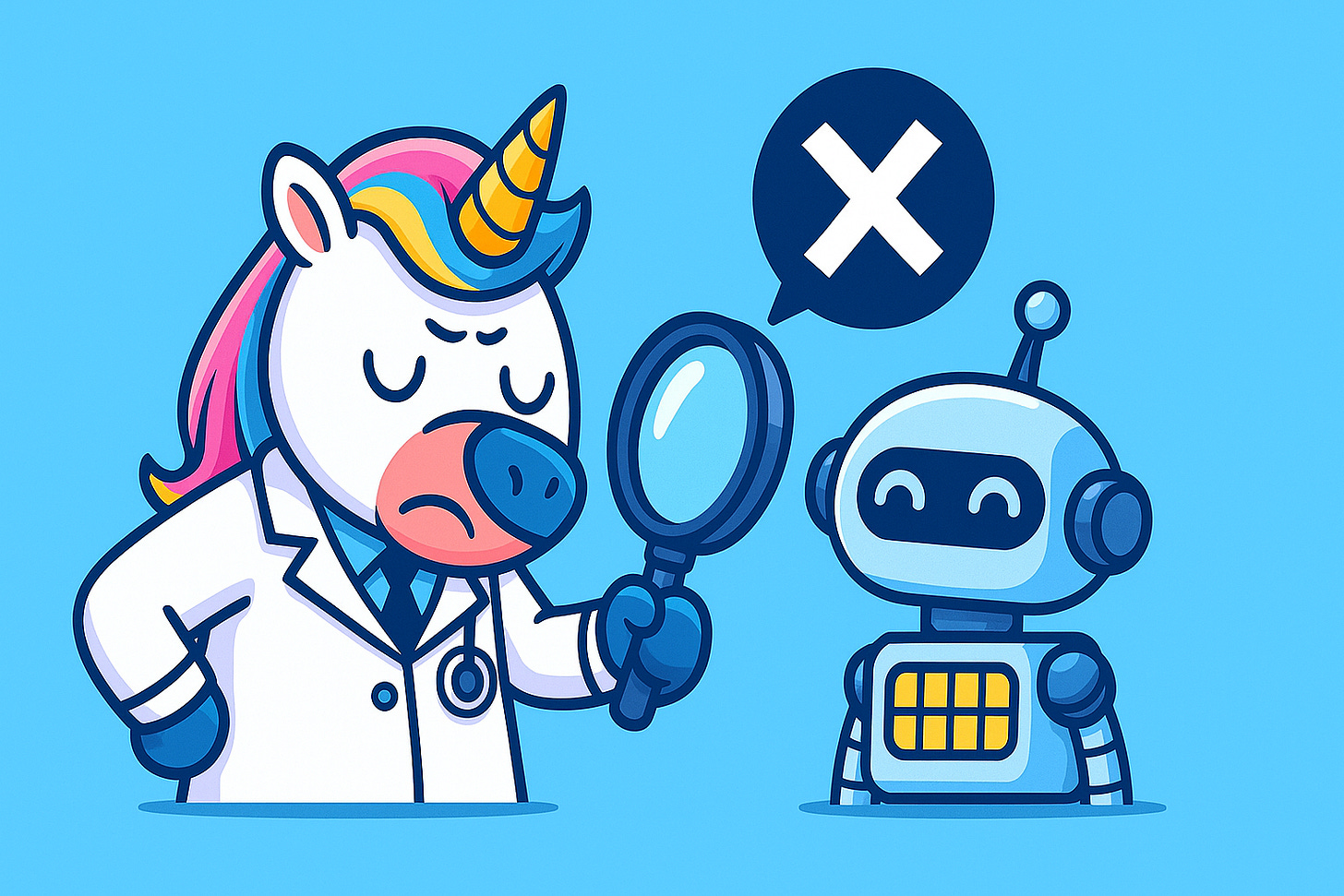5 reasons AI startups fail to find product-market fit
Lessons from working founders in the AI gold rush
After working with and examining dozens of AI startups, I noticed five recurring challenges distinct to AI on the road to product-market fit. Let’s go.
1. Finding traction is hard despite having an MVP
Prototyping has never been easier. No-code lowered the bar, and vibecoding dropped it even further—anyone can now build a demoable product.
But more founders than ever have demos without sales. Why? Because what they build aren’t MVPs, but prototypes. I define MVP as:
The minimal thing that actually delivers sufficient value to your customer, deployable in the context of the customer, that you can sell (src).
The proof of an MVP is in the eating of the pudding. If startups can’t get their product implemented, maybe their product isn’t as valuable as they think.
Article continues below this promo.
Get 20 minutes of free mentoring. Doctor Market Fit Office Hours, next week.
Any startup, first come, first served. Book via the link above (or this one)
2. It doesn’t scale easily because of three problems
Startups with a few paid pilots are happy but struggle to scale. One founder said, “It feels like we’re doing more consultancy than building a self-serve startup.” They dream of product-led growth, but AI agents rarely work that way.
These founders compare themselves to the likes of ChatGPT or Lovable, forgetting they’re building a different kind of product with different implementation paths. It doesn’t scale easily because of three problems.
First, it’s easy for one employee to use Cursor or Claude; it’s much harder for a 10-person team to integrate agents into their workflow.
Second, when an organization’s processes aren’t clearly defined, you need consulting just to map them. Speaking to all involved stakeholders to get info, map it, and confirm that you are on track.
Third, when processes are defined, you face the pain of integrating with existing systems: often slow, legacy, and API-poor. A lot of manual work. A client will demand unique integrations with some Slovakian kernel of Soviet times.
3. How good is your model really?
Many AI-agent startups think their agents can do everything. That leads to two outcomes: bad at one thing, or bad at many.
I keep seeing “AI for marketing,” “AI for startup mentors,” “AI for copywriting.” If it’s just Claude or OpenAI with some prompts, expect mediocrity (see image above). Is it really going to nail the harder tasks?
Secondly, some early-stage founders say it can replace entire teams and do everything from every department in an organisation across any industry. “We can do invoicing in healthcare and claim procurement for lawyers”. Sure buddy.

The strategy that works: Startups become successful by focusing on one or two verticals, and successful ones sometimes expand to many other verticals. Glean serves many verticals, yet has been around for six years and has lead a Series F round to grow. Lindy and Beam, have been around for two to three years, doing fewer verticals and less revenue.
4. Most AI startups lack a moat, but a model can be one
Fourth, many startups overestimate their moat. The SaaS revolution made building web apps and integrations easy; anyone can spin up a decent system in weeks. Add some AI API calls and boom: it looks impressive.
But, it’s not really your model, is it? You’re still leaning on Whisper, Claude, etc. Most founders don’t realise they’re today’s version of 2000s website builders or 2008 WordPress configurators. They’re deploying tools, not owning the moat, which is a specialised model.
I spoke to the founder of an AI voice startup doing voice transcription for doctors. I’ve seen that idea at least ten times, most failing to gain traction. He didn’t. Instead of using Wispr, he built his own voice model, tuned to the local language and medical terms. Now he’s integrated into nearly every electronic health record provider in his country, with the largest market share of all competition.
So by focusing on deployment, configuring agents and such, you might be leaving money on the table. Maybe the real opportunity is in hyper-specific models. Think: “we’re amazing at French tax returns” or “we crush South Korean insurance claims.”
5. The real competitor: in-house dev teams
Another common insight: many large firms have in-house dev teams eager to build their own tools. When you show up with your platform, they see a threat. “We are already working on this”, you will get as a result during a sales call.
Flip it around: it’s an opportunity. Instead of forcing your product on them, build something their devs can use or co-create with them. You’ll get buy-in instead of resistance.









Great points, Jeroen! Your breakdown of why AI startups struggle with product-market fit is spot on—especially the difference between MVPs and simple prototypes.
💡💡